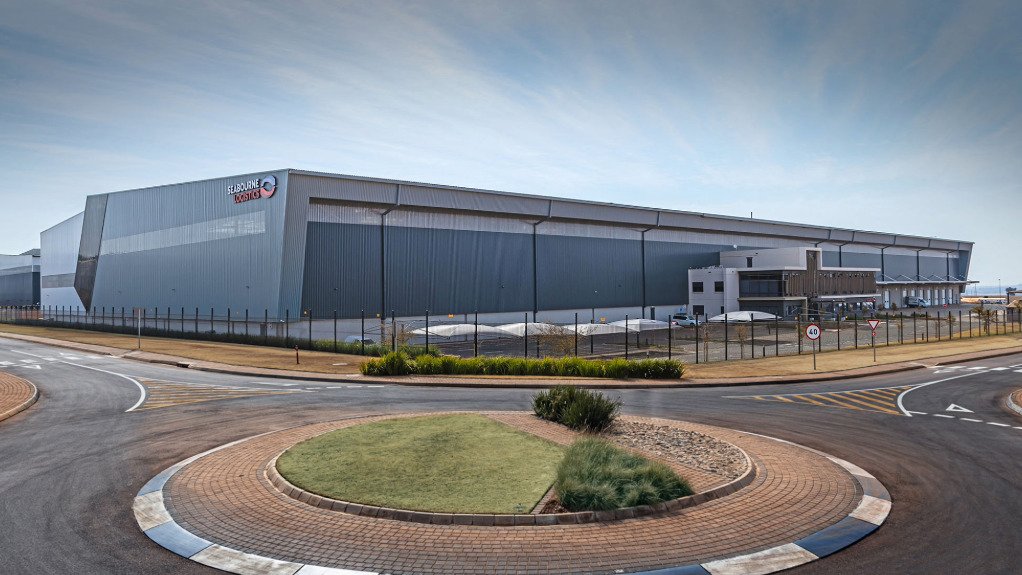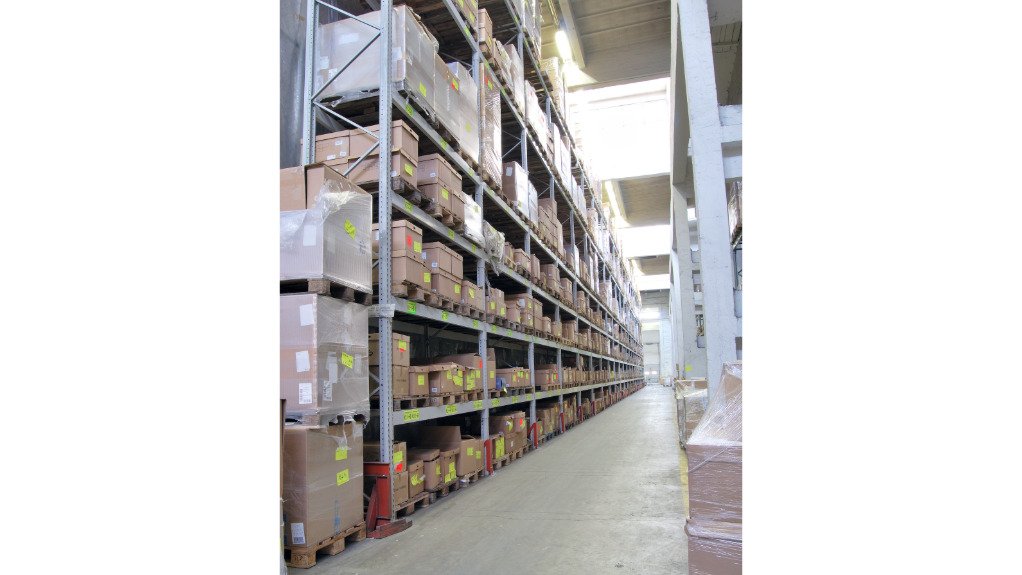The new premises of independent logistics service provider Seabourne Logistics, which was meant to be a 11 000-pallet capacity contemporary office and warehouse complex, is now a “comprehensive logistics facility” accommodating 13 500 pallets, and has surpassed all expectations in the months since its opening last year.
This unexpected boost in capacity can be attributed to substantial contracts that have been onboarded, says Seabourne Logistics South Africa strategic innovations executive Rouche van der Westhuizen.
More than 85 000 t of cargo, or just over 1.35-million parcels, have moved through the facility, in the Eastport Logistics Park, in Gauteng, between November 2023 and September 2024.
“The move to bigger facilities in September last year has, indeed, yielded improvements on processes within our warehouse and courier divisions,” he adds.
A larger operating area enabled Seabourne Logistics to take an aerial view of flows and, consequently, helped the company address and improve on previous inefficiencies and flows.
Operating in a true cross-dock facility has also increased the turnaround time for orders being processed and parcels being prepared for their final destination: “An improvement that is clearly visible in our overtime management, which has decreased by 28% since moving into the new facility,” Van der Westhuizen explains.
Seabourne is piloting technologies, such as radio-frequency identification tagging and automated smart drones, to monitor movement of stock, while implementing software upgrades and automated applications for repetitive tasks, which have been key to its management processes over the past year.
Further, the company’s providing overnight road delivery services for “pretty much anywhere in South Africa” has led to its becoming a prominent player in the automotive aftermarket industry and in the technology sphere, providing critical spare parts.
“Our daily vehicle departures and on-time key performance indicator metrics have also placed us among the preferred carriers for the wine industry based out of Cape Town,” he enthuses.
Sustainably Stored
Van der Westhuizen says Seabourne is committed to transforming warehouse operations by adopting smarter, more sustainable practices that will reduce its environmental impact and enhance operational efficiency.
“As part of this commitment, we’re implementing advanced, automated systems to streamline workflows and reduce carbon emissions, driving a future-forward approach to warehouse management.”
Additionally, by leveraging robotics, machine learning and AI-powered solutions, the company aims to create a more adaptive and efficient supply chain that meets the requirements of a rapidly evolving supply chain market.
“By incorporating automated systems and predictive analytics, we can significantly reduce energy consumption and minimise waste,” he adds.
Machine learning algorithms analyse Seabourne’s energy use patterns, thereby enabling it to make smarter decisions regarding resource allocation, cooling systems and lighting.
“Our adoption of electric-powered and hybrid equipment, coupled with a data-driven approach to energy efficiency, ensures that we’re reducing greenhouse-gas emissions while keeping our facilities running smoothly.”
These technologies not only help meet sustainability goals but also lower operational costs, creating a “win-win scenario” for the business and the environment, Van der Westhuizen adds.
Plans for the Future
“The three-year plan for our current warehouse remains to focus on sustainability and innovation,” says Van der Westhuizen.
Focusing on the upskilling of resources and team members at the warehouse remains a key part of the plan, and Seabourne’s dedicated innovations team is working on deploying the latest technology.
Van der Westhuizen stresses that the company aims to become an industry leader in the deployment of AI, which will take control of repetitive tasks and improve productivity while using business intelligence platforms to analyse data gathered throughout the business for more calculated risk-taking investments.
Focused Facilities
Sustainability has become a core focus of the company’s warehousing model, and it is developing solutions to overcome market-needs deficits by offering rework services for defective or defunct commodities that would previously have had to be shipped out of the country for repair or scrapping.
“By offering more professional and specialised rework activities we aim to reduce return costs and offer direct support to field technicians through our facility,” Van der Westhuizen concludes.
Edited by: Nadine James
Features Deputy Editor
EMAIL THIS ARTICLE SAVE THIS ARTICLE
ARTICLE ENQUIRY
To subscribe email subscriptions@creamermedia.co.za or click here
To advertise email advertising@creamermedia.co.za or click here















